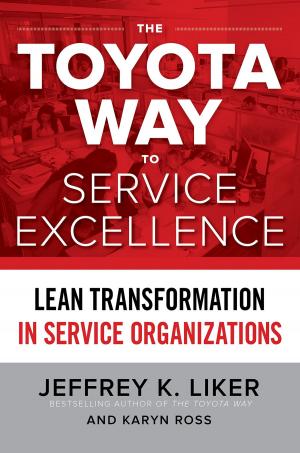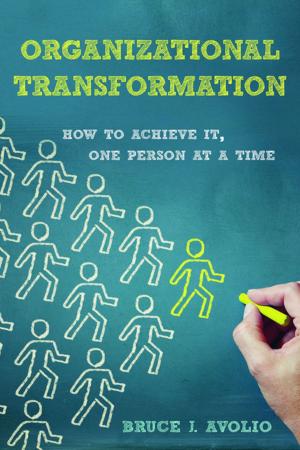Managing Change: The Process and Impact on People
Business & Finance, Marketing & Sales, Research, Human Resources & Personnel Management, Organizational Behavior| Author: | Minnesh Kaliprasad | ISBN: | 9780463812693 |
| Publisher: | Minnesh Kaliprasad | Publication: | September 8, 2018 |
| Imprint: | Smashwords Edition | Language: | English |
| Author: | Minnesh Kaliprasad |
| ISBN: | 9780463812693 |
| Publisher: | Minnesh Kaliprasad |
| Publication: | September 8, 2018 |
| Imprint: | Smashwords Edition |
| Language: | English |
Change is reflected in the everyday processes of human activity as well as in the day-to-day organisational environment as the transition or transformation from one state to another. Due to the enormous influence of change on the organisational environment, an assessment of “change management” becomes essential to any organisation.
Change Management is an organised, systematic application of the knowledge, tools, and resources for change that provide organisations with a key process to achieve the desired business strategy.
According to Schermerhorn, J.R., et al “managing change” firstly implies implementing change in a planned and managed structure via agents, individuals and groups in order to resolve organisational performance problems or realise performance opportunities. The change that needs to be managed is bounded and controlled by the organisation. Change secondly occurs when events outside the organisation trigger change. In this case “change management” implies the organisational response to change where there is limited control over the change by the organisation.
Ghandi said: "You must be the change you wish to see in the world”. This statement was supported by Kotter, J.P who states that producing change is about 80 percent leadership, i.e. establishing direction, aligning, motivating, and inspiring people - and about 20 percent management, i.e. planning, budgeting, organising, and problem solving.
No organisation today, whether large or small, local or global, is immune to change. To cope with new technological, competitive, and demographic forces, leaders in every sector have sought to fundamentally alter the way their organisations do business. These change efforts are known by differing names such as total quality management, re-engineering, re-structuring, mergers and acquisitions, and turnarounds, to name but a few.
In spite of these efforts, a major problem is that managers don’t understand the basic principles of change management and the fundamental reasons why change efforts fail.
This ebook aims to reflect a high level study of what change is, why change needs to be managed, the process of change, the impact of change on people and practical advice for managing this change.
Change is reflected in the everyday processes of human activity as well as in the day-to-day organisational environment as the transition or transformation from one state to another. Due to the enormous influence of change on the organisational environment, an assessment of “change management” becomes essential to any organisation.
Change Management is an organised, systematic application of the knowledge, tools, and resources for change that provide organisations with a key process to achieve the desired business strategy.
According to Schermerhorn, J.R., et al “managing change” firstly implies implementing change in a planned and managed structure via agents, individuals and groups in order to resolve organisational performance problems or realise performance opportunities. The change that needs to be managed is bounded and controlled by the organisation. Change secondly occurs when events outside the organisation trigger change. In this case “change management” implies the organisational response to change where there is limited control over the change by the organisation.
Ghandi said: "You must be the change you wish to see in the world”. This statement was supported by Kotter, J.P who states that producing change is about 80 percent leadership, i.e. establishing direction, aligning, motivating, and inspiring people - and about 20 percent management, i.e. planning, budgeting, organising, and problem solving.
No organisation today, whether large or small, local or global, is immune to change. To cope with new technological, competitive, and demographic forces, leaders in every sector have sought to fundamentally alter the way their organisations do business. These change efforts are known by differing names such as total quality management, re-engineering, re-structuring, mergers and acquisitions, and turnarounds, to name but a few.
In spite of these efforts, a major problem is that managers don’t understand the basic principles of change management and the fundamental reasons why change efforts fail.
This ebook aims to reflect a high level study of what change is, why change needs to be managed, the process of change, the impact of change on people and practical advice for managing this change.















